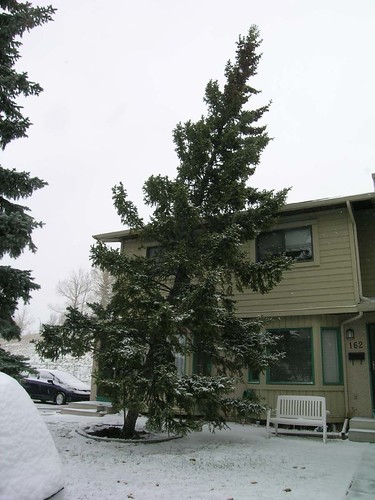MillerTreeMN
ArboristSite Operative
ive got this bad feeling about this tree. its a white pine, about 27-30 feet tall, just over 1 foot across at the base.
the tree leaned LAST FALL during a wind storm. its shifted at least 6 feet or more at the top, leaning towards their garage.
i told the people it should NOT be salvaged. i told them to look into the hole in the ground- you can look 1-1.5 feet into the ground and see NO roots on the side it is leaning away from
they insist we pull it upright and stake it.
1- it should have been done 5 months ago
2- will the roots even grow back on the one side?
3- i told them it could easily crack the roots on the other side
4- im worried about it cracking all the way through the base, and going where ever it feels like falling once we pull on it with a rope.
5- i dont mind staking a 12-15' tree that recently leaned over, but this thing is about 30 feet tall.
what would YOU do?
my gut tells me NOT to do the job.
im more than comfortable climbing this tree to take it down, ive done trees leaning that much that were 3 times the size of this, leaning just as bad. but i do NOT think it should be pulled on.
the tree leaned LAST FALL during a wind storm. its shifted at least 6 feet or more at the top, leaning towards their garage.
i told the people it should NOT be salvaged. i told them to look into the hole in the ground- you can look 1-1.5 feet into the ground and see NO roots on the side it is leaning away from
they insist we pull it upright and stake it.
1- it should have been done 5 months ago
2- will the roots even grow back on the one side?
3- i told them it could easily crack the roots on the other side
4- im worried about it cracking all the way through the base, and going where ever it feels like falling once we pull on it with a rope.
5- i dont mind staking a 12-15' tree that recently leaned over, but this thing is about 30 feet tall.
what would YOU do?
my gut tells me NOT to do the job.
im more than comfortable climbing this tree to take it down, ive done trees leaning that much that were 3 times the size of this, leaning just as bad. but i do NOT think it should be pulled on.
Last edited:






